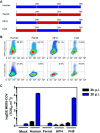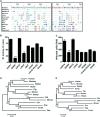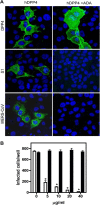Adenosine deaminase acts as a natural antagonist for dipeptidyl peptidase 4-mediated entry of the Middle East respiratory syndrome coronavirus
- PMID: 24257613
- PMCID: PMC3911594
- DOI: 10.1128/JVI.02935-13
Adenosine deaminase acts as a natural antagonist for dipeptidyl peptidase 4-mediated entry of the Middle East respiratory syndrome coronavirus
Abstract
Middle East respiratory syndrome coronavirus (MERS-CoV) replicates in cells of different species using dipeptidyl peptidase 4 (DPP4) as a functional receptor. Here we show the resistance of ferrets to MERS-CoV infection and inability of ferret DDP4 to bind MERS-CoV. Site-directed mutagenesis of amino acids variable in ferret DPP4 thus revealed the functional human DPP4 virus binding site. Adenosine deaminase (ADA), a DPP4 binding protein, competed for virus binding, acting as a natural antagonist for MERS-CoV infection.
Figures




References
-
- van Boheemen S, de Graaf M, Lauber C, Bestebroer TM, Raj VS, Zaki AM, Osterhaus AD, Haagmans BL, Gorbalenya AE, Snijder EJ, Fouchier RA. 2012. Genomic characterization of a newly discovered coronavirus associated with acute respiratory distress syndrome in humans. mBio 3:e00473–12. 10.1128/mBio.00473-12 - DOI - PMC - PubMed
-
- World Health Organization 2013. Middle East respiratory syndrome coronavirus (MERS-CoV)—update 2013/10/04. World Health Organization, Geneva, Switzerland
-
- Memish ZA, Mishra N, Olival KJ, Fagbo SF, Kapoor V, Epstein JH, AlHakeem R, Durosinloun A, Al Asmari M, Islam A, Kapoor A, Briese T, Daszak P, Al Rabeeah AA, Lipkin WI. November 2013. Middle East respiratory syndrome coronavirus in bats, Saudi Arabia. Emerg. Infect. Dis. 10.3201/eid1911.131172 - DOI - PMC - PubMed
Publication types
MeSH terms
Substances
Grants and funding
LinkOut - more resources
Full Text Sources
Other Literature Sources
Research Materials
Miscellaneous

